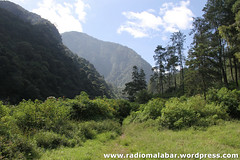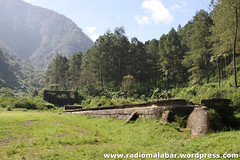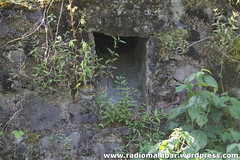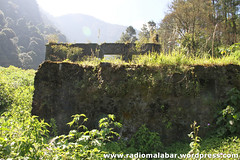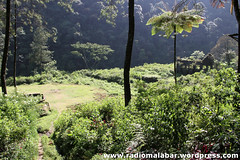Blog Archives
The Abandoned Ruin of Bojong Menje Temple
 I’ve been having this in mind that spending my leisure time for a stroll in a mall or even to a public tourist area is boring (and definitely so not-me). Then I decided to do a different thing: something to do with my deep secret inclination in Archeology and mix it with my effort to get familiar with my new Canon 7D. I thought about an ancient cave of Pawon, about 25 Km from Bandung to the west, but I found that it’s quite far and the remoteness of the place would seem to tire me more than make me happy. Beside, I can only afford this whole
I’ve been having this in mind that spending my leisure time for a stroll in a mall or even to a public tourist area is boring (and definitely so not-me). Then I decided to do a different thing: something to do with my deep secret inclination in Archeology and mix it with my effort to get familiar with my new Canon 7D. I thought about an ancient cave of Pawon, about 25 Km from Bandung to the west, but I found that it’s quite far and the remoteness of the place would seem to tire me more than make me happy. Beside, I can only afford this whole preciousSunday. Then my search hit this ruin of an ancient temple, called Bojong Menje. It’s around the sub-district of Rancaekek. A colleague friend of mind lives there, so I could use his help to lead me to the location.
I know I am not the first to write about this place. In fact, I have searched for just about everything that other people has done on it (some of them are 100% identical, be it on different blogs). The way I see it, my writing here is like an update of the current situation of the site. At least, picture wise. I visited this place in 18th February 2012.
I imagined that it would not be anything much than a ruin, of stones of course. When I got there, it was worst. It was hardly of a place that tourist would drop by. Truly, I was sad for how the site looked like. It’s in a such a remote spot that you have to go through a very narrow alley in the middle of almost slummy housings :
First, the location. The coordinate is Latitude: 6°57’57.57″S and Longitude: 107°48’6.60″E. Using satellite view of Google Maps, it would look like this :
The main site was surrounded by iron fence. When I got there the place was locked up. There was nobody there. Not even someone who are supposed to be the caretaker for the site; leaving just me and my friend wondering as who to ask around. A blog has informed me that an old man named Pak Rohman should have been there for the job. Was it because it was Sunday ? He has made up his mind to the media about taking care of this temple. He was barely seen.
A quick look of the site :
A closer look of the ruin :
There was nothing to inform visitor about the site, except a warning sign from regional police office saying that doing any harm, taking out of the stones, or disassemble anything in the area of cultural preservation would be charged with maximum of 10 years of imprisonment or a fine of 100 million Rupiah.
If it is a cultural preservation, then the site should have been managed seriously, for anyone could see that it was practically left out. Abandoned, so to speak. The rust and grey-out furnish paint of two houses that seemed to be shelter for the excavators were obvious signs of it. Clearly, nobody hasn’t been inside there for quite some time.
An analysis has been made about the exact scope of the temple, which beyond doubt it must be wider than what it is now. However, land ownership was the first real obstacle, as the surrounding area were packed with factories. That leads to the assumption that the existence of the temple must have been known long before it was propagated by the media in 2002.
To make it worst, total excavation seems to be impossible, as the other part of the site was submerged. A surge of water from the underground could be the reason that it was just left the way it is now :
There’s nothing much else to see, really. However this lack of details has not degraded anything in terms of its significance, especially for the history of West Java. A very interesting point was put out by Wikipedia, saying that since the temple of Bojong Menje is older, or at least as old as, those temples in Dieng (known as the oldest temple in Java), the present understanding of how culture disseminated in Java would have to change; from east to the west, to west to the east. Unfortunately, I suppose the supporting evidences should be more than a few, and the problem with anything ancient in West Java is its scarcity. There’s been widely known, ancestors of West Java neither left only little traces, destroyed, nor hid the remains. That is to say, the temple of Bojong Menje should have contributed to the understanding of the whole picture.
As today, everybody are looking ahead to the future. The chimneys, generators, and machineries around the ruin would never be thought of somewhat irony in the history of indigenous culture :
Rather, they are all a very logical lucrative advancement. Is it wrong anyway ?
Once again, I was sad to see the ruin of this temple. But should I have never been ?











